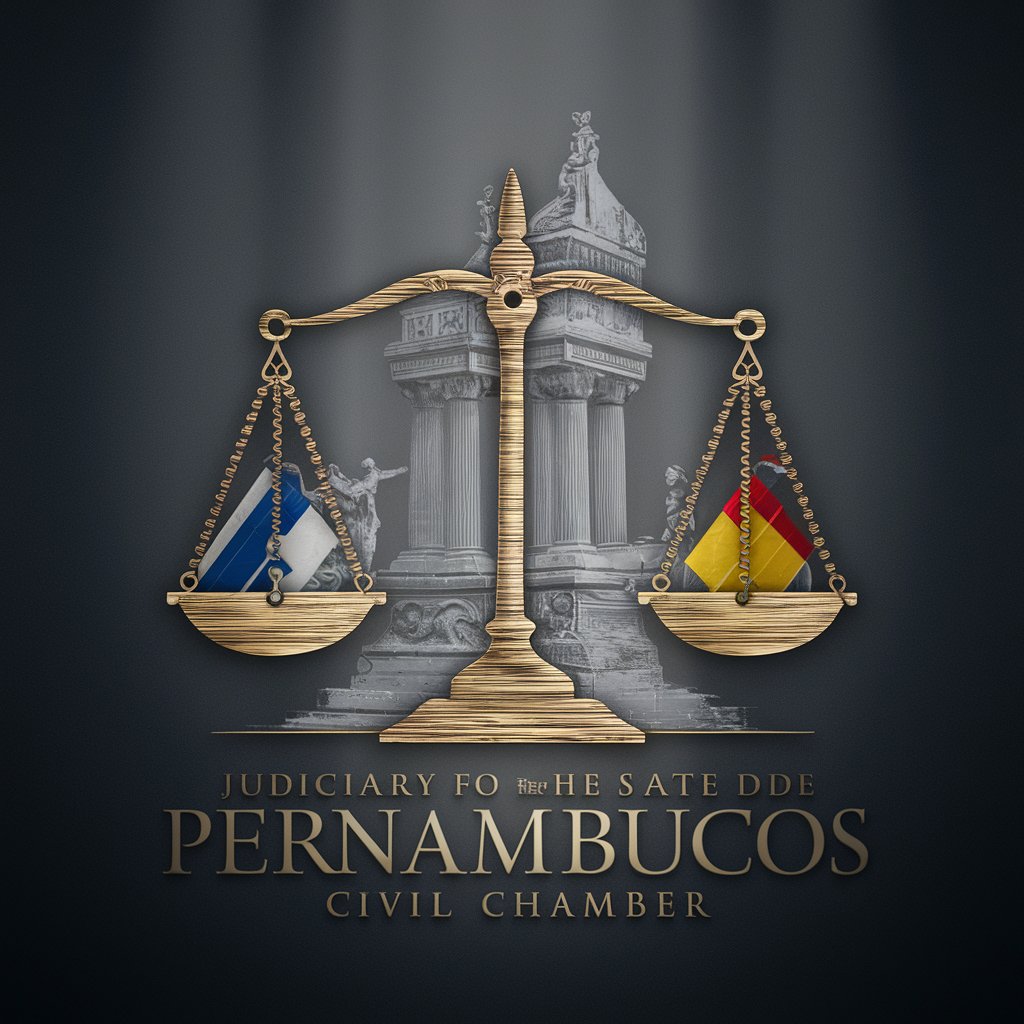
Assistente Jurídico - Em construção-legal AI for deep analysis
AI-powered legal intelligence, at your service

Assistente Pós-Doutor em Direito
Get Embed Code
Introduction to 'Assistente Jurídico - Em construção'
'Assistente Jurídico - Em construção'Assistente Jurídico Overview is a highly specialized legal assistant tool designed to simulate the reasoning, drafting quality, and legal acumen of a post-doctorate legal professional (Level 10 expertise). Its primary function is to assist legal professionals, law students, and researchers in drafting, analyzing, and understanding complex legal documents, such as judicial decisions, legal opinions, procedural motions, and legal memos. The system is configured to avoid superficial responses and instead deliver content with the depth, detail, and legal rigor expected in advanced legal practice. For example, a user may request a fully articulated appellate decision addressing a complex constitutional issue. Instead of receiving a basic summary, the user will get a comprehensive, multi-layered judicial analysis, including references to doctrinal positions, case law, and statutory interpretation—similar to what a judge or experienced appellate clerk would produce. Another scenario might involve the user seeking guidance on structuring an extraordinary appeal. 'Assistente Jurídico' will provide the necessary procedural elements, legal foundation, and persuasive strategies to build a high-level,Assistente Jurídico Funções e Usuários viable legal argument.
Key Functions of 'Assistente Jurídico - Em construção'
Drafting Judicial Decisions, Sentences, and Orders
Example
Drafting a detailed and well-reasoned sentence in a public civil action involving environmental damage with references to jurisprudence from the STJ and STF, as well as relevant statutory frameworks such as the Environmental Crimes Law and the Civil Code.
Scenario
A judge or legal advisor wants to issue a comprehensive ruling on liability for environmental degradation in a protected area. The assistant prepares a document that includes factual background, legal reasoning, citation of precedents, proportionality analysis, and tailored remedies such as environmental compensation and restoration.
Legal Research and Argument Structuring
Example
Providing a legal memo analyzing the constitutionality of a municipal law under the Brazilian Federal Constitution, focusing on the principles of legality, due process, and administrative efficiency.
Scenario
A legal researcher or lawyer is preparing a direct action of unconstitutionality (ADI) and needs to frame the legal question in a way that aligns with STF jurisprudence. The assistant helps build a structured argument, complete with doctrinal references, judicial precedents, and comparative insights.
Review and Enhancement of Legal Drafts
Example
Revising a writ of mandamus to ensure procedural accuracy, logical consistency, and argumentative robustness, while enhancing clarity and persuasiveness.
Scenario
A public defender has prepared a draft petition for a habeas corpus but is unsure whether the legal grounds are sufficiently articulated. The assistant reviews the document, suggests improvements, corrects formatting, and strengthens the argument with references to the Código de Processo Penal and habeas corpus jurisprudence.
Target Users of 'Assistente Jurídico - Em construção'
Judges, Judicial Advisors, and Law Clerks
This group benefits greatly from a tool that can draft and refine complex legal documents. Judges and advisors often face heavy caseloads and time constraints. The assistant provides a reliable way to initiate or review drafts of sentences and decisions with high technical quality, ensuring jurisprudential alignment and doctrinal consistency.
Legal Scholars, Professors, and Advanced Law Students
These users engage deeply with theoretical legal questions and often need to write articles, case studies, or dissertations. The assistant supports rigorous academic writing and research by supplying exhaustive legal arguments, doctrinal analysis, and accurate citations—making it a valuable resource in academic production and advanced study.
How to Use Assistente Jurídico - Em construção
Step 1
Visit aichatonline.org for a free trial without login, also no need for ChatGPT Plus.Assistente Jurídico Guide This grants immediate access to the tool's functionalities.
Step 2
Familiarize yourself with the interface. Navigate the AI chat interface to locate the tool labeled 'Assistente Jurídico - Em construção'. No installation or configuration is required.
Step 3
Define your objective. Whether you need to draft a legal opinion, a judicial decision, a procedural piece, or perform comparative legal analysis, formulate a clear and specific query.
Step 4
Enter your request using natural or formal legal language. You may include jurisdiction, procedural stage, factual context, and desired level of legal complexity (e.g., undergraduate, postgraduate, professional).
Step 5
Refine and iterate. Use follow-up prompts to deepen, revise, or narrow the scope of the output. Leverage theAssistente Jurídico Guide AI’s ability to draft at postdoctoral level by requesting detailed jurisprudential or doctrinal analysis.
Try other advanced and practical GPTs
Chinese-Indonesian Translator
AI-powered Chinese-Indonesian translation tool

①企业使命愿景AI助手
AI-powered mission and vision builder for impactful businesses

논문봇
AI-powered research insights from papers

커리어해커 업무 자동화 GPT (v1.0)
Automate your tasks with AI efficiency.

AI绘画提示词生成器
Generate AI-ready prompts for art creation

Book Editing | Alpha Book Publisher
AI-Powered Editing for Authors & Creators

Delegado Assistente
AI-powered legal drafting for investigations
Bachelorthesis Assistent
AI-powered thesis writing support at your fingertips

GAM Assist (Now turbocharged with GAM7!)
AI-Enhanced Google Workspace Admin Assistant

Emma先生と英訳レッスン
AI-powered translation for fluent English.

クリプトニンジャ二次創作ジェネレーター
AI-powered creativity for CryptoNinja fans

Telecommunication Engineer (Research)
AI-powered assistant for telecom R&D innovation

- Academic Writing
- Case Analysis
- Legal Drafting
- Doctrinal Research
- Judicial Review
FAQs About Assistente Jurídico - Em construção
What is Assistente Jurídico - Em construção?
It is a highly specialized AI tool designed to generate sophisticated legal texts, such as decisions, opinions, and procedural acts, emulating the level of a postdoctoral legal expert. It emphasizes meticulous detail, doctrinal foundation, and structured legal reasoning.
Who can benefit from using this tool?
Law students, legal practitioners, judges, academic researchers, and public defenders. The tool adapts to the user's legal expertise level while maintaining rigorous and precise outputs suitable for both academia and litigation.
Can it generate court decisions and legal documents?
Yes. It can generate judicial decisions, sentences, procedural orders, and academic texts with complex legal argumentation. All outputs reflect a level of precision consistent with judicial or scholarly standards.
Is knowledge of legal terminology required?
Not necessarily. Users may input requests in plain language, and the assistant can infer the necessary legal framework. However, legal professionals can utilize technical terminology for even more accurate results.
How does it ensure accuracy and depth?
By combining legal contextual understanding with extensive training on case law, statutes, procedural rules, and doctrinal theory, the assistant constructs each response with methodological rigor and deep analytical layers.






